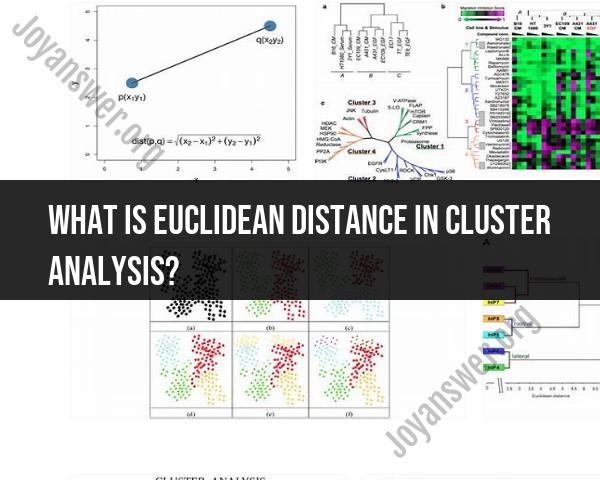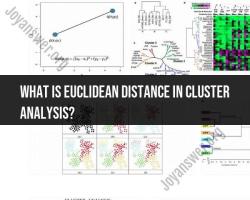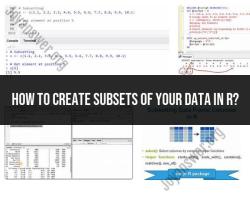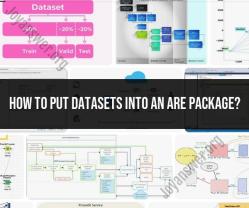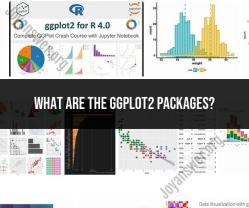What is Euclidean distance in cluster analysis?
Euclidean distance is a key concept in cluster analysis, which is used to measure the straight-line distance between two points in a multi-dimensional space. It is one of the most common distance measures used in clustering algorithms, such as K-means, hierarchical clustering, and others. Here’s an overview of Euclidean distance and its role in cluster analysis:
Definition of Euclidean Distance
The Euclidean distance between two points, and , in a two-dimensional space is given by the formula:
In an n-dimensional space, the Euclidean distance between points and is:
Role in Cluster Analysis
Determining Similarity:
- In cluster analysis, the Euclidean distance is used to determine the similarity between data points. Points that are closer to each other (with a smaller Euclidean distance) are considered more similar than those that are farther apart.
Clustering Algorithms:
- K-means Clustering: Euclidean distance is used to assign data points to the nearest cluster centroid and to update the position of the centroids.
- Hierarchical Clustering: It helps in measuring the distance between clusters or data points to build a dendrogram that represents the nested grouping of objects.
Centroid Calculation:
- In K-means and other centroid-based algorithms, Euclidean distance is crucial for calculating the centroid of a cluster by averaging the coordinates of the points within the cluster.
Evaluating Cluster Quality:
- The compactness of clusters can be evaluated using Euclidean distance by measuring the average or total distance between points within the same cluster.
Benefits of Using Euclidean Distance
- Simplicity: It is easy to compute and understand.
- Intuitive: It corresponds to our everyday notion of distance.
- Efficiency: Computationally efficient, especially in low-dimensional spaces.
Limitations
- Scale Sensitivity: Euclidean distance can be affected by the scale of the data. Features with larger ranges can dominate the distance calculation.
- Dimensionality: In high-dimensional spaces, Euclidean distance can become less meaningful due to the curse of dimensionality.
- Assumption of Linear Space: It assumes that the space is linear and flat, which may not always be the case in more complex data structures.
Practical Example in Cluster Analysis
Consider a dataset with points in a 2-dimensional space:
The Euclidean distance between Point A and Point B is:
In a clustering algorithm, this distance would help determine whether these two points should be in the same cluster or in different clusters.
Conclusion
Euclidean distance is a fundamental metric in cluster analysis, providing a straightforward way to measure similarity and organize data points into clusters based on their geometric proximity. Despite its limitations, it remains widely used due to its simplicity and effectiveness in many applications.
How is Euclidean distance utilized in the context of cluster analysis?
Euclidean distance plays a fundamental role in cluster analysis as a measure of similarity between data points. Here's how it's utilized:
Concept:
- In cluster analysis, the goal is to group data points into clusters based on their similarities. Euclidean distance helps quantify this similarity by measuring the straight-line distance between two points in a multidimensional space.
Calculation:
- Imagine data points represented as vectors with multiple features (dimensions). Euclidean distance is calculated by finding the square root of the sum of squared differences between corresponding features of the two data points.
For data points A = (a1, a2, ..., an) and B = (b1, b2, ..., bn), where n is the number of features:
Euclidean Distance (A, B) = √((a1 - b1)² + (a2 - b2)² + ... + (an - bn)²)
Why Euclidean Distance?
- Euclidean distance offers a simple and intuitive way to measure similarity. Smaller distances indicate greater similarity between data points, making them likely candidates for the same cluster.
Applications:
- K-Means Clustering: This popular clustering algorithm uses Euclidean distance to assign data points to the nearest cluster centroid (central point).
- Hierarchical Clustering: Euclidean distance can be used to calculate the distance between clusters, guiding the hierarchical merging or splitting of clusters during the analysis.
Limitations:
- Euclidean distance assumes a spherical data distribution. It might not be ideal for data with elongated clusters or clusters of irregular shapes.
- For data with features of vastly different scales, Euclidean distance can be skewed by features with larger scales.
Alternatives:
- Other distance metrics like Manhattan distance or cosine similarity can be used depending on the data and the specific clustering task.
Overall, Euclidean distance remains a widely used and versatile tool in cluster analysis due to its simplicity and effectiveness in many data scenarios.
